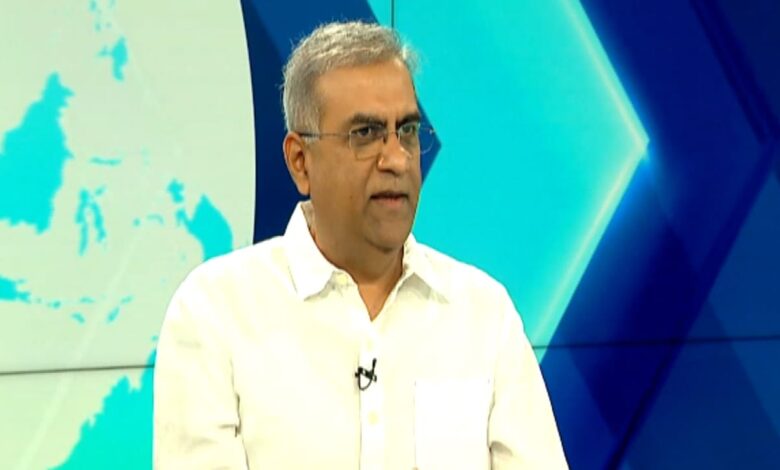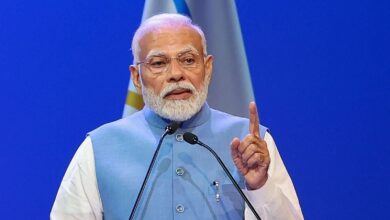Rising FII outflows may not be a bad thing for Indian market, says Enam’s Manish Chokhani – Here’s why

Samvat 2080 has marked an extraordinary year for the Indian stock markets, with the Nifty witnessing a remarkable 30% rise since last Diwali. The surge is fuelled in large part by local retail money, which has been flowing into the markets like an unstoppable freight train. Investors have injected $4 billion into equity mutual fund schemes every month, underscoring the heightened interest in India’s equity markets.
From a macroeconomic perspective, India’s growth story remains compelling. The nation continues to hold its position as the fastest-growing economy globally, driven by multiple growth levers such as the demographic dividend, a massive domestic market, and initiatives like Make in India. Further, the emergence of unicorns, rapid infrastructure development, and the increasing participation of retail investors have collectively contributed to the bullish sentiment in the markets.
As Samvat 2081 approaches, investors are keen to understand whether this upward trend will continue. CNBC-TV18 spoke with Manish Chokhani, Director of Enam Holdings, to explore the outlook for stock markets in the new year.
Below are the excerpts of the interview.
Q: We’ve observed significant FII selling recently, with nearly $8 billion in outflows month-to-date. This marks the fourth-largest episode of foreign investor withdrawals ever. What’s driving this trend?
Chokhani: Yes, it is a bit like 2008, except that the base is very different. Also, the fact that there’s a lot of domestic money; otherwise this would have been a deeper correction. But having said that, foreigners own 15%-16% of India, so it’s about $800 billion at least, of stock that they have. Now they’ve sold $10 billion, so they have traded 1% of what they hold. We shouldn’t be grudging them that in the context, in the last six months alone, we’ve raised $30 billion in our markets, of which $15 billion has come from companies raising it for building new capacities or whatever. But $15 billion has actually been promoter and private equity selling.
These promoters include foreigners from all over the world. Investors like GE and Whirlpool have sold from the US. Vodafone has sold from the UK. Sumitomo has sold from Japan. Hyundai and soon, Samsung will sell from Korea. SingTel has sold from Singapore, and indeed, even our own Tata Sons has sold down some of TCS. Anil Agarwal has sold down Vedanta. People realise there’s good value being provided by the market. Why not take it when people sell and take money home, like it happened in the early 2000s when Warburg, Pincus encashed Bharti; it opened the floodgates to private equity in India. This sort of selling can get absorbed. It creates confidence that this is a two-way street. I’m not trapped like I’m in China or in Africa, where I can come in, but I can never leave. It may not be a bad thing, and we did need the market to cool off.
Q: The question is when will they stop leaving? And why are they leaving, foreigners, especially? What’s your sense?
Chokhani: The context is, if you have $800 billion and you take $10 billion home, they’re not leaving; they are tactically readjusting.
Q: Tactically readjusting because of what? Because India is expensive?
Chokhani: India is super expensive. No one’s denied that. I think if we did not have this $50 billion of inflows from domestics, I don’t think anybody was arguing this is a cheap value market where you should go in and take fresh positions. Everyone’s happily riding the lifting tide, but earnings are slowing down. You’ve got the stimulus happening in China. You’ve got, hopefully, now the US having a second leg of growth. Indeed, if the markets believe that Trump comes back and you get tax cuts and you get tariffs, and US prosperity will come back. You have a $62 trillion market cap sitting there on which, if you make 10%, you still make $6 trillion as opposed to even if you make 25% on the Indian $5 trillion, it gives you an extra trillion, so percentage gains and absolute gains play in people’s minds.
Q: So one is valuations, that is the only bit, right? There is nothing else?
Chokhani: India, post-COVID, from a rebound perspective, the big themes we talked about consumer discretionary have played out. We talked of the platform plays with the Zomato and the others have all played out. We talked of privatisation plays, which are the Adanis and the Bharti and all have played out. You wanted the financialisation play to happen, which everyone assumed was only banks. It played out in PSU banks and the ICICI banks and all the others, and the capital market plays have fantastically performed.
And then the government came and stepped on the gas with PLI and the infrastructure spend. It gave you a whole new fillip on PSUs, defence, road, rail, and they’ve come like a springboard from a low that was held back. If you take a compounding from 2018-2019 to now, the earning compounding is pretty much what it should have been in the mid-teens, and the cyclicals are the ones that have come back, which also remember the last time they had their day in the sun was the 2008 bull market. All the capital goods, defence, industrials, real estate, went nowhere, from 2008 to 2021. Don’t deny them their place in the sun. Let them enjoy a few years.
Our problem as investors is we may be overpaying for it upfront, which also we’ve spoken so many times in the past that we should be the centre of a melt-up in this decade. It’s happened with the domestic flows. I’m underwhelmed with what’s happened with the global flows, and even FDI, because other than the magnificent seven, which are generating money hand over fist, it’s not like the old industrials or the old consumer stocks in the world are doing well, and they all got levered up to the hilt to do buybacks and reward their executives. It’s not like they’re looking to expand and then half of the manufacturing GDP of the world is around the auto industry, and they’re just shell-shocked with what the Chinese have done with EVs. You see the way the European chemical industry is kind of getting hollowed out and selling left, right and center. So in that mood, you’re not likely to say, let me go out and expand the expansionist tendencies in businesses that are going to come out of Asia now, largely, or maybe the Middle East. The Middle East money, I think, is still coming with the sovereign funds and so on. But unfortunately, the Asians and especially the Japanese have still not come in big force.
Q: Both FDI and portfolio flows?
Chokhani: Both ways.
Q: So that is still pending, you would say?
Chokhani: I think it’s still pending. Portfolio flows from the West, FDI from Asia and Middle East. I think there will be significant money coming from there.
Q: But do you think we go in for a period of at least, from a market perspective some time correction?
Chokhani: I think we would get to a melt-up at some point in this decade, I’ll hate it to happen because then 20 years are forgotten, as it happened to Japan, like it’s happened to China.
Q: But right now, are we at a bit of an inflection point or no?
Chokhani: Right now, supply is meeting demand. I just hope even the government encashes and privatises because if they can take money from the markets at three, four times of what they invested and re-put it back to creating more infrastructure and other assets, it’s only going to accelerate growth. Because remember the free pass we got after COVID of inflating the fiscal deficit is now gone, and that gave us the rise of infrastructure, defence, rail spend, which you have to dial it back now for welfare, which is the need of the electoral hour now. So you’re going to get a shock on that side, that the capex levers are suddenly pulled back. And now the worry is that, with the K-shaped recovery, the top end has gone and bought their bigger homes and their bigger cars and the holidays. What happens to the bottom end?
Watch the video for more



